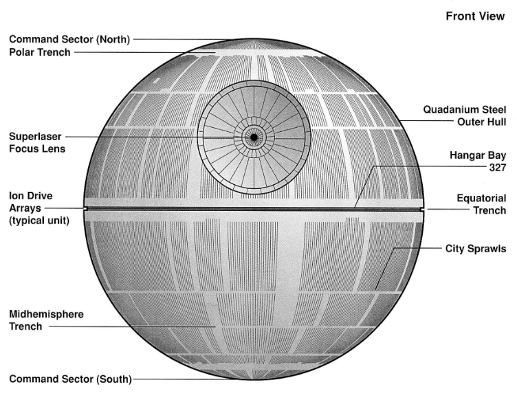According to Star Wars Technical Journal (Volume Two) (July 1994) (emphasis added):
At the core of the Death Star was an immense, cavernous housing for the battle station's power generator matrix. A fusion reactor of incredible proportions, fed by stellar fuel bottles lining its periphery, produced the raw energy demanded by the Death Star's superlaser and hyperdrive systems. Much of the station's interior volume was filled by the machinery necessary to sustain such a fusion core, with sublight propulsion systems and defense field generators lining the outer equatorial regions. Realspace propulsion was handled by an external array of powerful ion engines, which converted the raw fusion energy of the station's core into thrust and pressed the station's great mass into any motion dictated by the Death Star's huge navicomputer banks. While ion engines of such magnitude are highly radioactive, no other system could provide the directional control necessary for a station of such great size. Engineering personnel assigned to monitor ion vent operations usually wore radiation suits.
The Death Star's hyperspace motivator units were comprised of linked banks of field generators such as those found aboard Imperial Star Destroyers. One hundred twenty-three individual hyperspace generators, tied into a single navigational matrix, were necessary to carry the Death Star beyond the speed of light. The intense power generated within the battle station, combined with its great mass, gave it both magnetic and artificial gravitational fields equal to those of a natural body many times its size.
At the true equator of the station was a deep trench, encircling the Death Star like a straight, endless canyon some 376 kilometers in length. Here were housed the station's primary hanger bays, drive thrusters, heat exhausts, primary sensor arrays, and tractor beam systems.
It also adds the following statistics:
Construction site: Planetary orbit, penal world Despayre, Horuz system, Outer Rim Territories
Diameter: 120,000 meters (equivalent to a Class IV moon)
Maximum Speed: 1.2c
Fuel: Compressed stellar hydrogen
Here is an exterior diagram from the technical journal showing where the ion drives are located:
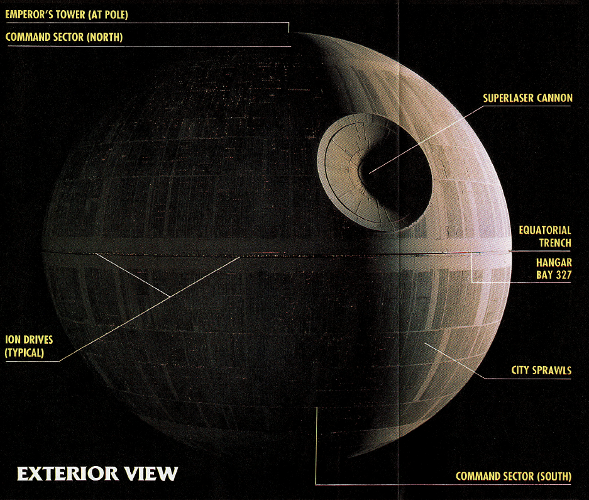
Here is a interior diagram from the technical journal:
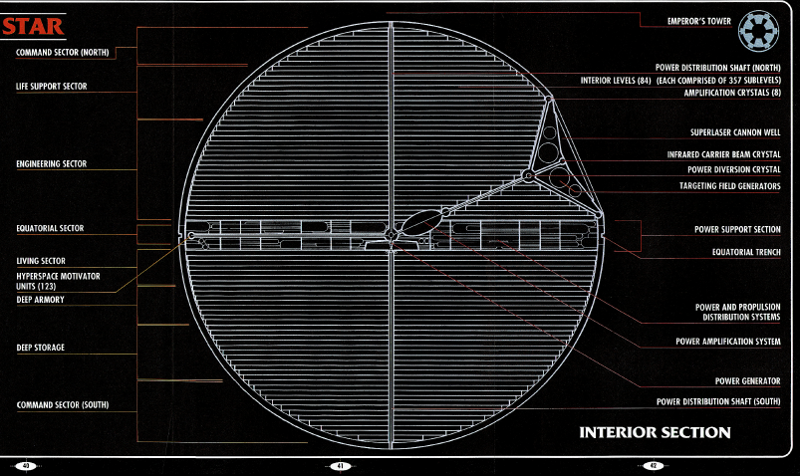
There is a nice full color multi-page cross section of the Death Star in Star Wars Incredible Cross Sections which shows the ion sublight engines and hyperdrive are hidden inside of the moon space station along the equatorial sector.
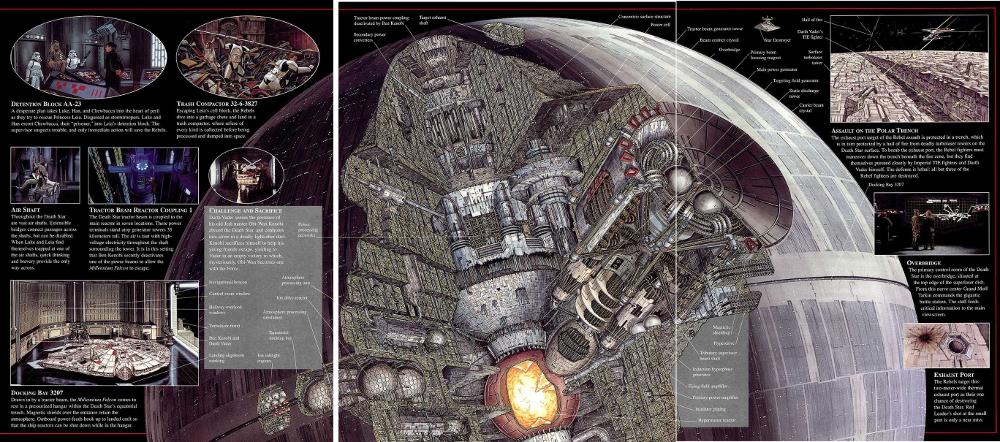
Below are close-ups on where the ion sublight engines and hyperdrive are located. Notice that they are hidden beneath the surface of the Death Star.
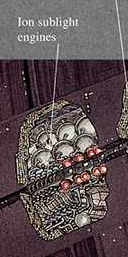
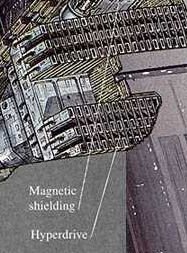
The Essential Guide to Vehicles and Vessels (1996) states:
Fully half of the battle station's interior was filled by the reactor core, the sublight and hyperdrive systems and the superlaser housing.
